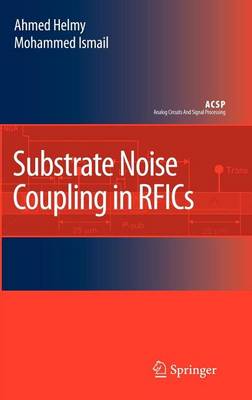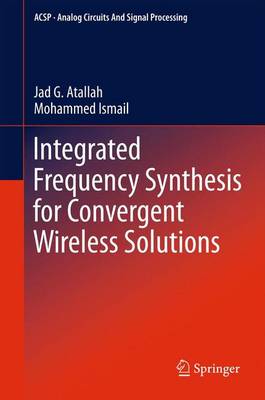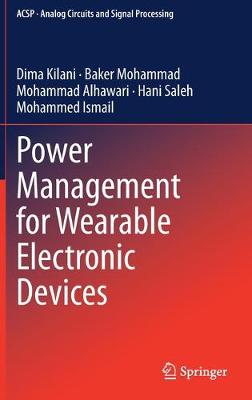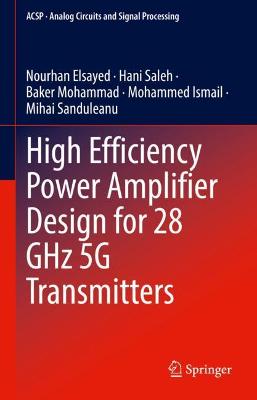Analog Circuits and Signal Processing
6 total works
The book reports modeling and simulation techniques for substrate noise coupling effects in RFICs and introduces isolation structures and design guides to mitigate such effects with the ultimate goal of enhancing the yield of RF and mixed signal SoCs. The book further reports silicon measurements, and new test and noise isolation structures. To the authors' knowledge, this is the first title devoted to the topic of substrate noise coupling in RFICs as part of a large SoC.
Integrated Frequency Synthesis for Convergent Wireless Solutions
by Jad G. Atallah and Mohammed Ismail
This book describes the design and implementation of an electronic subsystem called the frequency synthesizer, which is a very important building block for any wireless transceiver. The discussion includes several new techniques for the design of such a subsystem which include the usage modes of the wireless device, including its support for several leading-edge wireless standards. This new perspective for designing such a demanding subsystem is based on the fact that optimizing the performance of a complete system is not always achieved by optimizing the performance of its building blocks separately. This book provides "hands-on" examples of this sort of co-design of optimized subsystems, which can make the vision of an always-best-connected scenario a reality.
CMOS High Efficiency On-Chip Power Management
by John Hu and Mohammed Ismail
Digital Background Calibration of Analog to Digital Converters
by Bahar Jalali-Farahani, Anand Meruva, and Mohammed Ismail
Power Management for Wearable Electronic Devices
by Dima Kilani, Baker Mohammad, Mohammad Alhawari, Hani Saleh, and Mohammed Ismail
This book describes power management integrated circuits (PMIC), for power converters and voltage regulators necessary for energy efficient and small form factor systems. The authors discuss state-of-the-art PMICs not only for battery powered wearable devices, but also energy harvesting-based devices. The circuits presented support voltage scaling to reduce the overall average power consumption of a wearable device, resulting in longer device operating time. The discussion includes many designs, control techniques and approaches to distribute efficiently the power among different blocks in the device.
* Demonstrates for readers how to innovate in designing power management integrated circuits (PMIC) suitable for wearable devices, powered by either battery or harvesting energy;
* Introduces a dual outputs switched capacitor, using a single voltage regulator to minimize the area overhead and discusses the effect of having more than two outputs on the area and power efficiency;
* Introduces a novel clock-less digital LDO regulator that eliminates the use of the clocked comparator and serial shift register in the conventional design;
* Presents experimental results of energy harvesting-based power management units (PMU), using different combinations of power converters and voltage regulators, providing a guide for designers to select the appropriate option based on device requirements.
High Efficiency Power Amplifier Design for 28 GHz 5G Transmitters
by Nourhan Elsayed, Hani Saleh, Baker Mohammad, Mohammed Ismail, and Mihai Sanduleanu
This book introduces power amplifier design in 22nm FDSOI CMOS dedicated towards 5G applications at 28 GHz and presents 4 state-of-the-art power amplifier designs. The authors discuss power amplifier performance metrics, design trade-offs, and presents different power amplifier classes utilizing efficiency enhancement techniques at 28 GHz. The book presents the design process from theory, simulation, layout, and finally measurement results.




